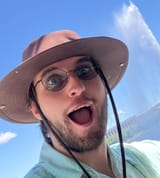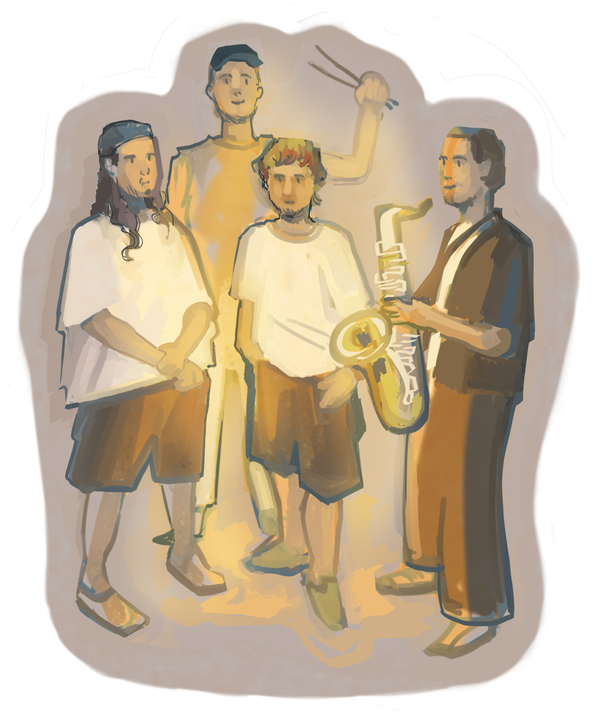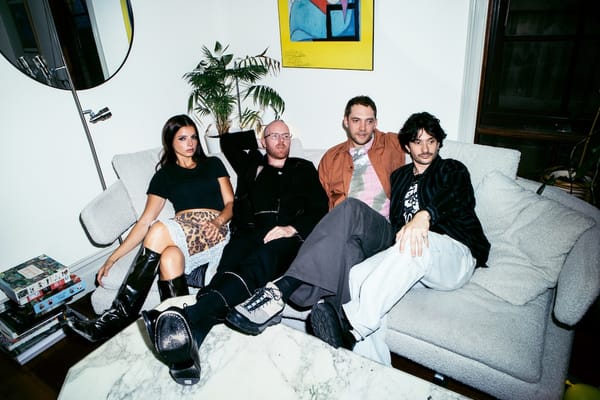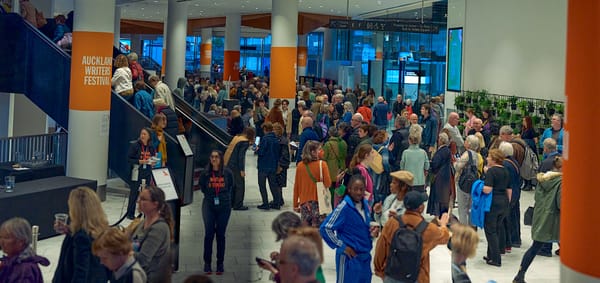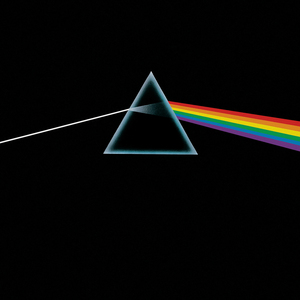New Blood Pop Interview
An Interview with UOA Alumni Artist Dr. Brad Novak
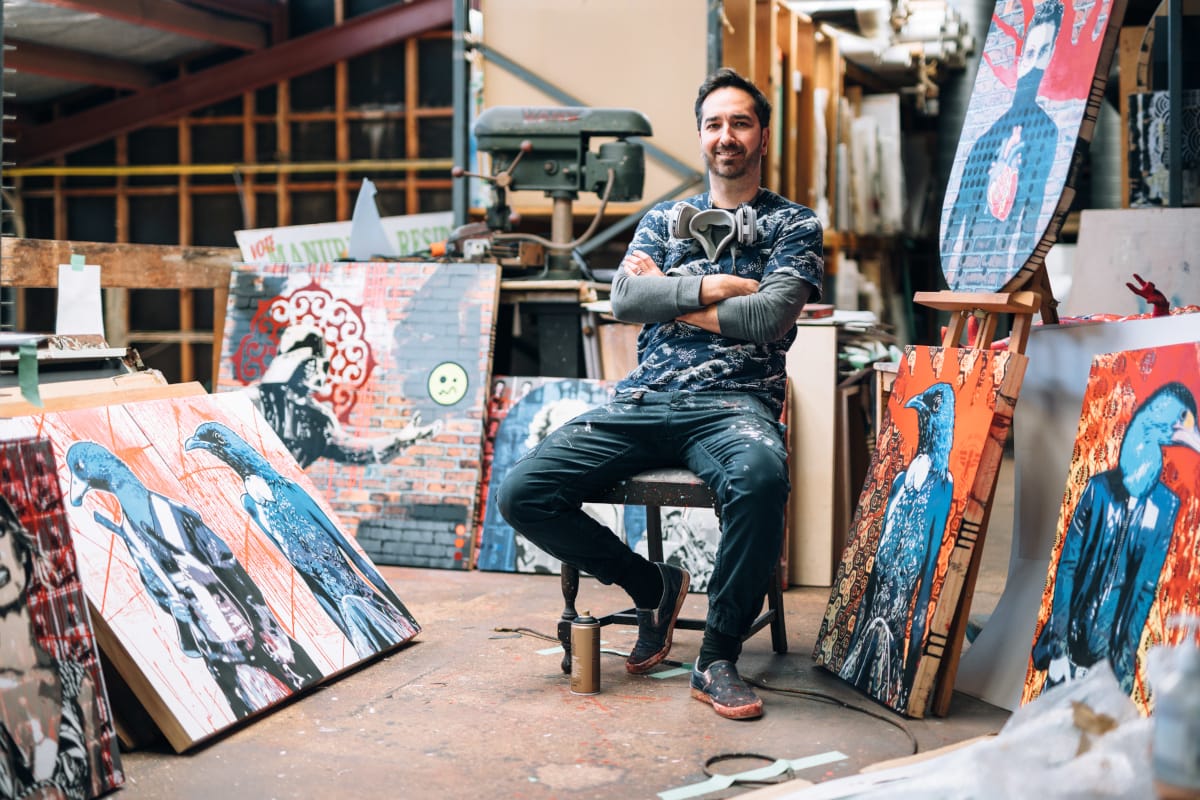
Brad Novak is one of New Zealand's most internationally recognised artists, whose urban art pieces have hung in galleries overseas. He is the first artist in NZ’s history to exhibit with global pop and street art superstars such as Andy Warhol, Keith Haring, Brainwash and BANKSY (Toronto, 2015).
Brad has carved out perhaps one of the most unconventional yet successful careers, splitting his time between being a Public Health Medicine Specialist and a Professional Artist. Over the summer, I met with him to discuss both his careers and his advice for young creatives. Craccum and I would like to thank him for his generosity and for opening up about his art journey. Follow his art on Instagram @newbloodpop.
What colour are you feeling today?
It's grey outside today, but I'm feeling a cool blue, it’s my favourite colour!
What was the last album you listened to?
We don't tend to listen to full albums that much anymore, do we? [Laughs] I think the last one would have been The Car by The Arctic Monkeys. It's a breakaway from their previous style, but it’s awesome.
Favourite restaurant?
I love Wagamamas. Sadly, the Auckland one closed down. I got introduced to it when I lived in the UK. It's Asian fusion, very relaxed, and yum.
How does a doctor end up as an artist?
Well, how long have you got… that is an unusual story!
I guess, a good place to start is me as a young teen at Auckland Grammar School (AGS) in the late 80s and early 90s. I loved my time there, and the school taught me to work hard!
I was deemed an "academic" and was streamed into the top class. Back then, AGS, unfortunately, had limited subject choices for the A stream, so I literally couldn't take art, design, or graphics. I was on the proverbial ‘achievement train’ doing physics, Latin, sports and stuff, and I remember coming to the end of 7th form and having no idea what I wanted to do after school. All my classmates were going to be doctors or lawyers, so even though I lacked specific career aspirations, I thought it’d be smart to keep my options open. I applied for and got into medical school. So, it might sound crazy but I kind of fell into medicine as a career.
Being a junior doctor at 22 years of age was an interesting experience to say the least, and that’s where life can open exciting new doors when you least expect it. My girlfriend at the time (now my wife) wanted to do an OE. After 2 years working in hospitals, and still lacking career aspirations, I was up for that!!
This is where happenstance takes over. Fortunately, Katrina, who is a primary school teacher, had studied the different genres of art to teach kids. At that time, I was incredibly naive about art. I thought good art had to be realism. One day, fed up with my narrow-minded thinking, she took me to the Tate Modern Art Gallery (in London) to start my creative education.
That visit was like a lightning strike, awakening my inner artist. I spent 2 hours discounting the quality of art, saying, "That’s crap, I could do that" and Katrina keep repeating “But you didn’t do it, Brad”. Finally, I came across an artwork in which I saw that art can be an idea, not just a pretty picture. My enthusiasm must have been obvious, as Katrina then basically challenged me to become an artist! [Laughed]
I owe Katrina a lot! It’s ironic that the artists I was ignorant of then ended up becoming some of my major influences over the course of my art career so far (Warhol, Banksy, Basquiat)!
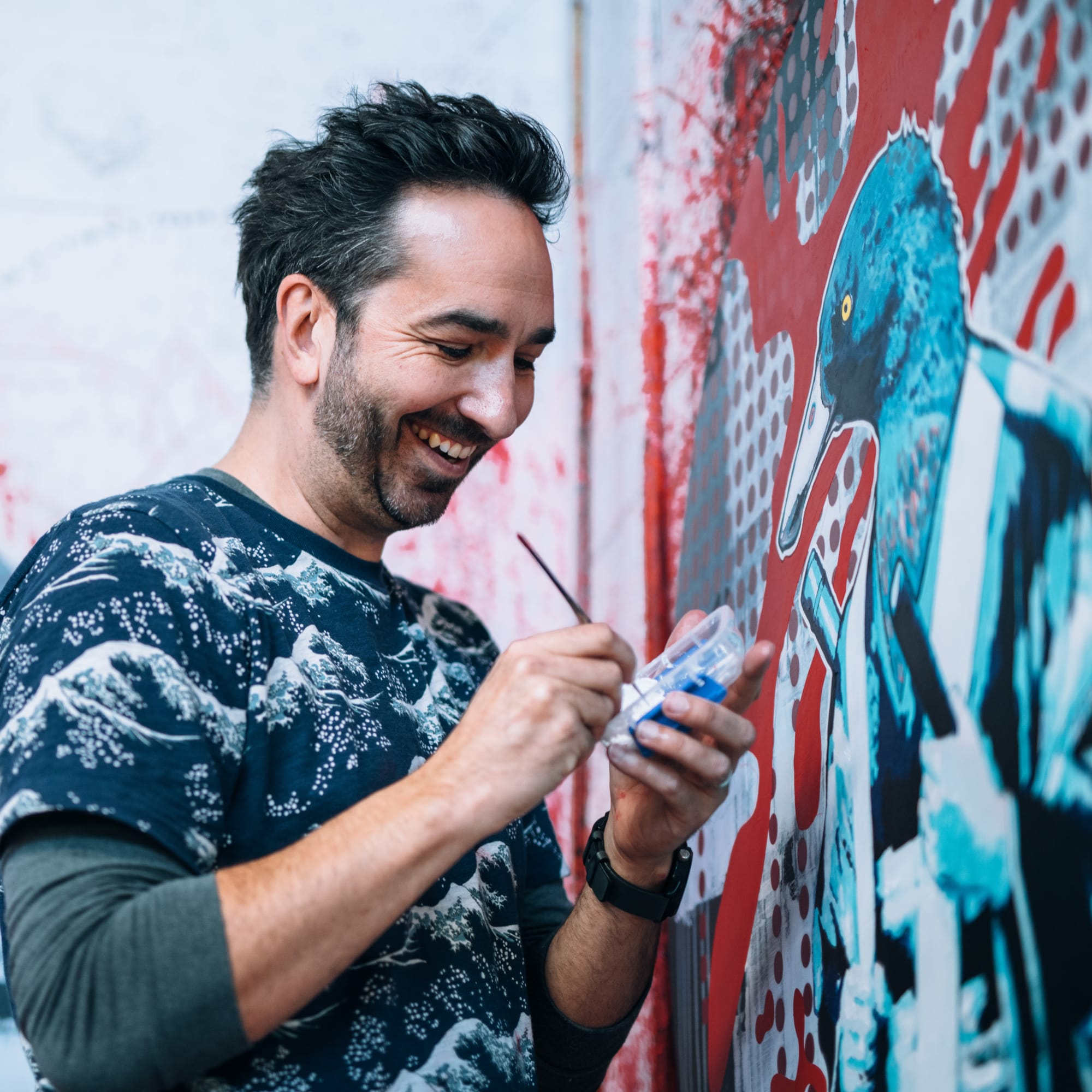
So, how did you learn how to make art?
I’m entirely self-taught. It began with photography on my OE (2000-2002), as we were doing heaps of travelling. This helped me learn about composition and seeing the world with an artistic eye. It was an invigorating exploratory period.
I started painting on my return to NZ around 2003. But a pivotal moment happened in 2008, when I wanted to get some prints of my works created. I found this place [Artrite Screen Printing]. Glenn Taylor (the director) and his team are real hidden gems of the New Zealand art world. They do screenprints with some of the best proponents of art here, like Michael Smither, Max Gimblett and Karl Maughan, amongst others. I now have my studio in their factory, which is amazing creatively. I’m intimately involved in the making of my screenprints. It’s a beautiful craft and sits alongside my painting practice like a well-loved friend.
Did your medical skills ever come in handy doing art?
Ha. Not at all. Unfortunately, there’s not much room for creativity in clinical medicine. Although, I was fortunate to be introduced to Public Health Medicine during my OE and upon return to NZ I started to specialise in that branch of medicine. ‘Public Health’ deals with much more than individual disease. It strives to tackle health in society more broadly. Its evidence based, but from my perspective there’s much more room to bring your own personality and interests into the actual practice. I guess it’s the most creative branch of medicine e.g. there’s not only one prescribed way to make society healthier.
I’m grateful to still be practicing (public health) medicine part-time, as it’s part of who I am. I’ve built that into my art practice at times too e.g. using medical iconography, like the Caduceus or Snellen eye chart, in my work. The "blood" in my moniker "New Blood Pop" references the vitality of life.
Overall, it’s been an interesting, and not always easy, journey finding my true authentic identity. Am I just Dr Novak? Or Brad, who is an artist, too? What does it mean to live a creative life? I'm excited to still be asking myself those questions to this day!!
What advice do you have for young people who have a creative hobby and would like to do it as part of their career eventually, like you did?
This advice is for young people in general, not just those with a passion for creating. If you're not sure what to do, take your time. We rush into decisions at a young age (I certainly did) and sometimes it’s a process to get to know yourself and find what really excites you.
I never believed I’d have a career that has provided me with so much joy and satisfaction as I have now. That’s not to say that being an artist is “all roses”. Like any career there are challenges. But I feel it can be as ‘rosy’ as any career can be. Balancing two careers also has its challenges, but it can be done if you want it to work!
Because of my journey, I'm also a big advocate for artists to define success in ways that work for them. There’s this romantic idea that you must be a full-time artist to be successful. I completely disagree with this premise. I consider dual careers as a bonus. Purely from a financial point of view, having another source of income (no matter where it’s from) can take the pressure off your creating. Not having to worry about how much work you sell, or don’t sell, has the wonderful side effect of helping you create more authentic art. You can create pieces that you love, not that you think other people might like.
Also, I believe, nobody can define whether you are an artist or not. You can be an artist and never show your work to anyone (although I do see major bonuses from encouraging yourself to take that step). You can be an artist whether you sell work or not, and you can still be an artist even if you aren’t currently creating. Being an artist is a way of life, self-defined by each person. Don’t let anyone ever put you in a box to try to limit you!
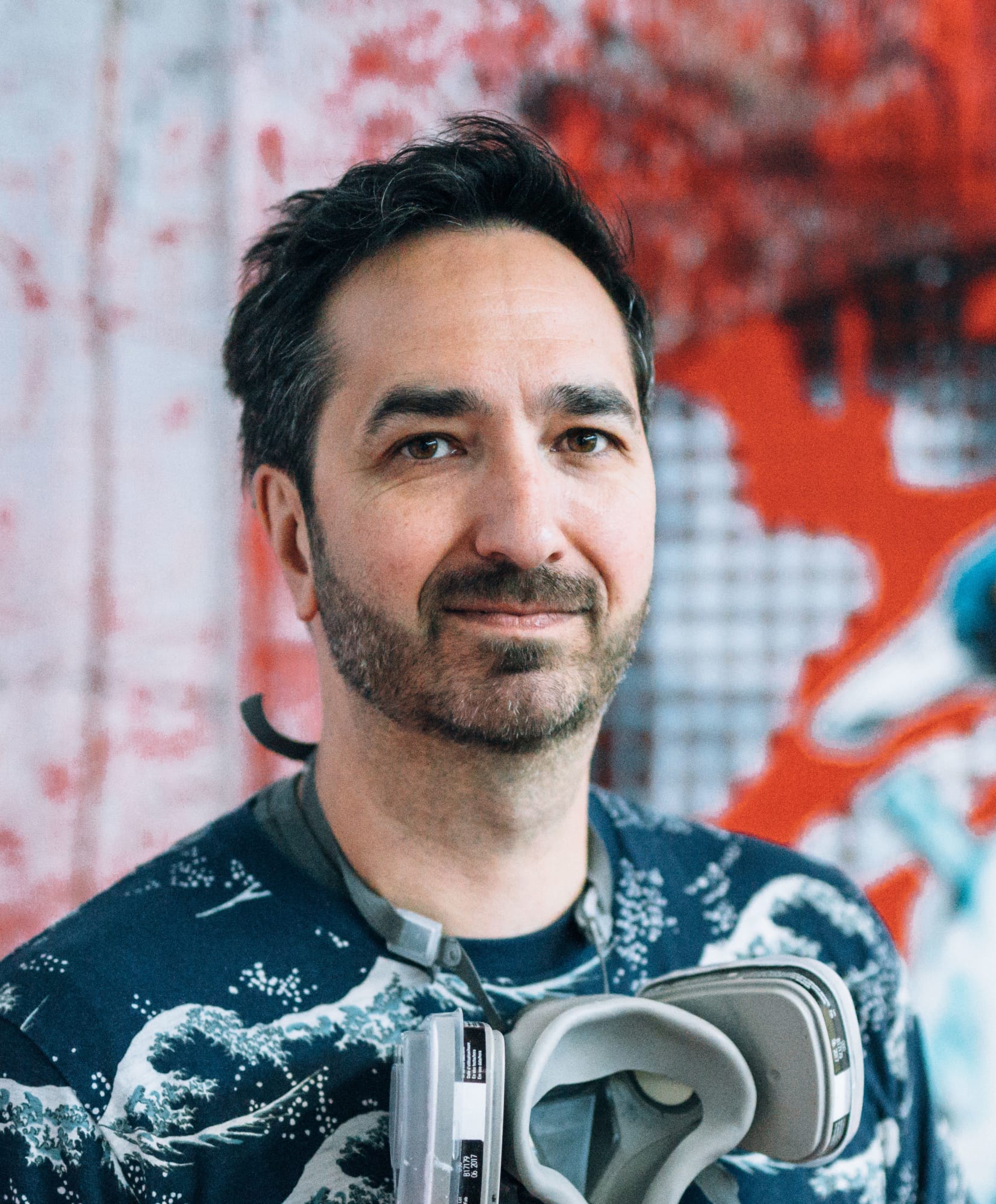
Your portraiture shows clear inspiration from pop artists like Andy Warhol. Who are some other artists who have influenced your style?
Aside from Andy Warhol, other pop artists from the UK and US in the '60s inspired me (e.g. Lichtenstein). More recent artists, such as Shepard Fairey (Obey Giant) and Banksy, are major inspirations. I look up to several senior artists in New Zealand as well, like Michael Smither and Max Gimblett. I was fortunate enough to be asked by Michael to accompany him in a two-person portraiture show. His first-ever show of this kind in his long and distinguished career. I still pinch myself that that happened.
I was also grateful to meet Max Gimblett in New York around 2009. That was a key point in my career. Katrina and I spent many hours with him in his studio, and at dinner at this local Italian restaurant afterwards. During that visit, Max said to me “Brad, you are a real artist”. You can’t under-estimate how hearing something like this, from someone you respect, can literally help change the course of your life.
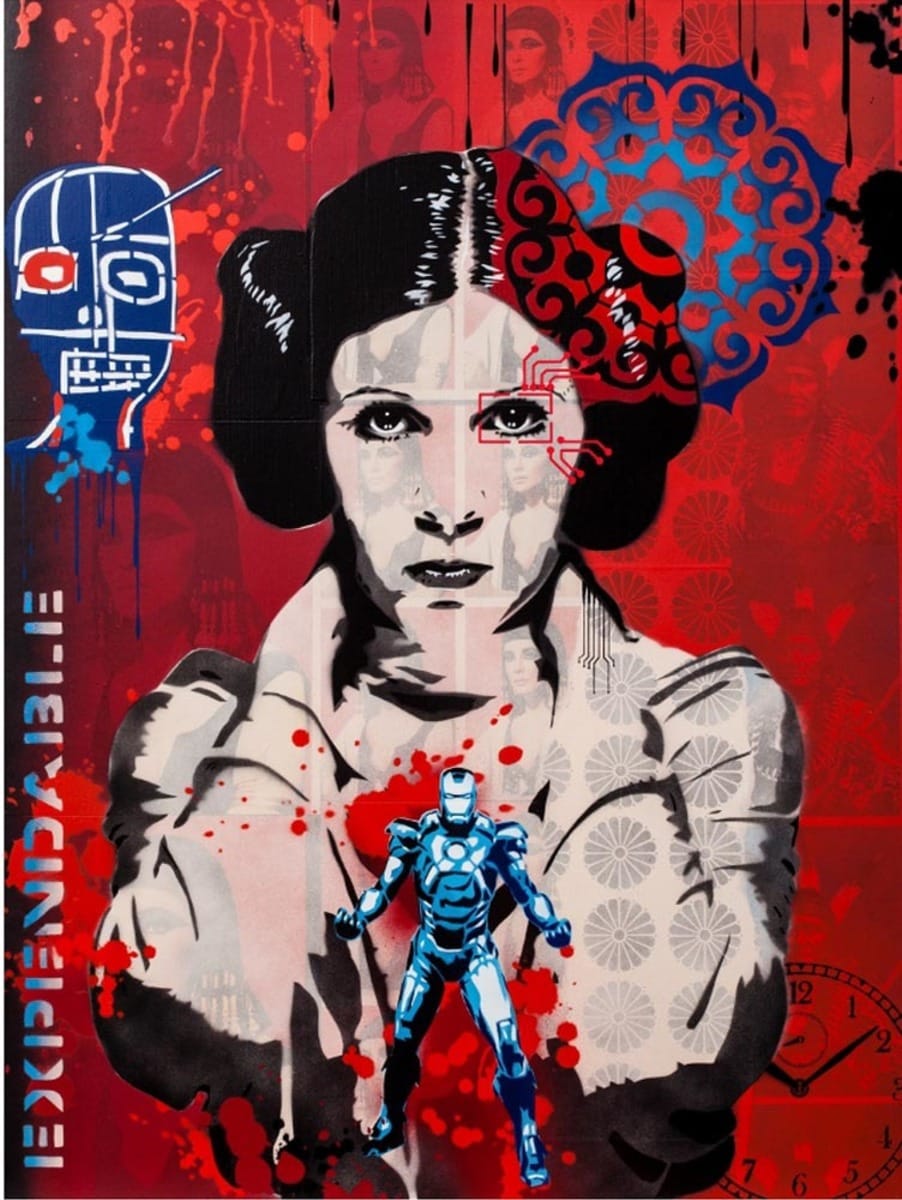
Do you have any art hanging in your house? If so, what kind?
Definitely. A little of my own work, but I have a lot of art gifted, swapped, or bought from friends who are artists as well. I’ve got work by Ben Frost, Copyright and RYCA amongst others. Katrina and I have similar tastes, but we also buy work that just speaks to us individually too.
In such a globalised world, much of our pop and urban culture here in Aotearoa is imported. How does your Kiwi identity interact with your art?
Many of us Kiwis are outward-looking, I believe. We love to travel and learn about other cultures. Personally, I consider myself an “artist based in New Zealand” rather than a “New Zealand artist”. I’ve always been heavily influenced by international artists and international pop culture. Showing with galleries in the UK, Canada and the USA (such as Vertical Gallery in Chicago) has made me realise that the world is smaller than we think. If you’d told me that I’d have solo shows with top galleries overseas 20 years ago, I’d never have believed you.
Your ongoing and popular 'DIGITAL DILEMMA' series explores the encroachment of technology on our lives. What are your thoughts on the recent rise of AI art?
I grew up in the generation before smartphones and the internet. My “Digital Dilemma” series is trying to challenge and remind viewers about how much the world has changed. You'll notice one eye on my portraits often has a digital lens over it, and the other eye doesn't. This is to remind us that we can’t just continue seeing the world through technology, that we must keep engaging with the “real world” offline, and look through the other eye so to speak. If not for the sake of this generation, then for the sake of generations to come…
AI is likely going to be very disruptive to many things that we take for granted. There will be many positives, but I think there’ll also be job losses. I’m hopeful that humanity will continue to adapt and create more rewarding jobs. It’d be great if AI gave people more time to follow more creative and spiritual pursuits… but, we will see if I’m showing some naivety there.
Regarding AI in the art world, I see issues that AI can “train” on images without credit or consent being given. I think being transparent about your inspirations is important as an artist, ethically. I think AI will need to be regulated in some way.
I don't want “the Terminator” to happen in real life either! [Laughs]
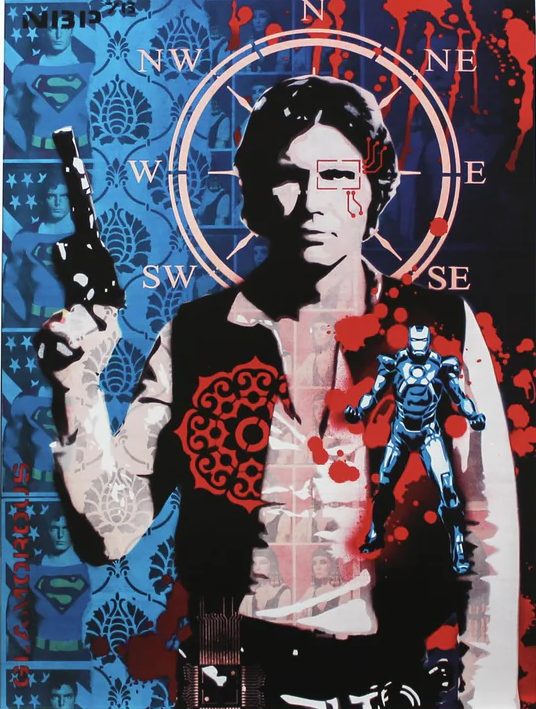
How do iconic celebrities play into your works? What is the selection process like, and how do you choose the photos on which to base your portraits?
Urban Pop Art is about making potentially high-brow art off low-brow everyday things. Andy Warhol used images of famous people from newspapers, which caused a stir back in the 1960s. For me, celebrities are a metaphor, a generic but easily recognisable subject which I can create distinctive commentary around (such as the Digital Dilemma, and my Hybrids series which deals with “identity”). There are important messages in my work if someone is prepared to engage past the superficial.
I choose subjects based on two main criteria: they must be thought-provoking, or people I personally respect. For example, I've utilised Queen Elizabeth for over a decade in my work, because she’s been so ever-present in Western society, and technology has changed so rapidly over her lifetime. Alternatively, I’ve painted Audrey Hepburn many times. She was not just a beautiful actor but also a wonderful humanitarian who spoke multiple languages. Much of my work focuses on heroes from my youth. I’m a pop culture geek, who grew up on the original Star Wars movies, so icons like Harrison Ford and Carrie Fisher (for example) feature regularly.
Do you ever encounter copyright issues using IPs like Star Wars and Marvel in your pieces?
Before I was a doctor or an artist, I was a Dungeons & Dragons playing geek. [Laughs] I liked these things before they were cool or mainstream. Regarding copyright, I haven't had any issues. I think you're okay if your work is authentic, transformative, and you're open about the source material. You don’t want to breach any merchandising or licensing agreements. Warhol paved the way, and I am only one of many artists, worldwide, following in his footsteps.
Have you met any of the subjects of your art? Do you know if any have seen it?
Wow, I wish I’d met Prince or David Bowie!!! Does it count that I saw Prince in his last NZ concert ever?
One of my early works from the Hybrid series in 2009 was based on the Reservoir Dogs movie poster. It featured the guys walking in the black suits but with NZ birds’ heads topping their bodies. Around that time, the movie’s director, Quentin Tarantino, came to NZ for a premiere, and during that trip, he acquired a couple of my “Reservoir Dogs” screenprints. He gave one to his muse, the actor and stuntwoman Zoe Bell. But he also signed one for me, with the message "Love the birds. Good on ya, Brad". There’s no better endorsement for that work I’d rather receive!
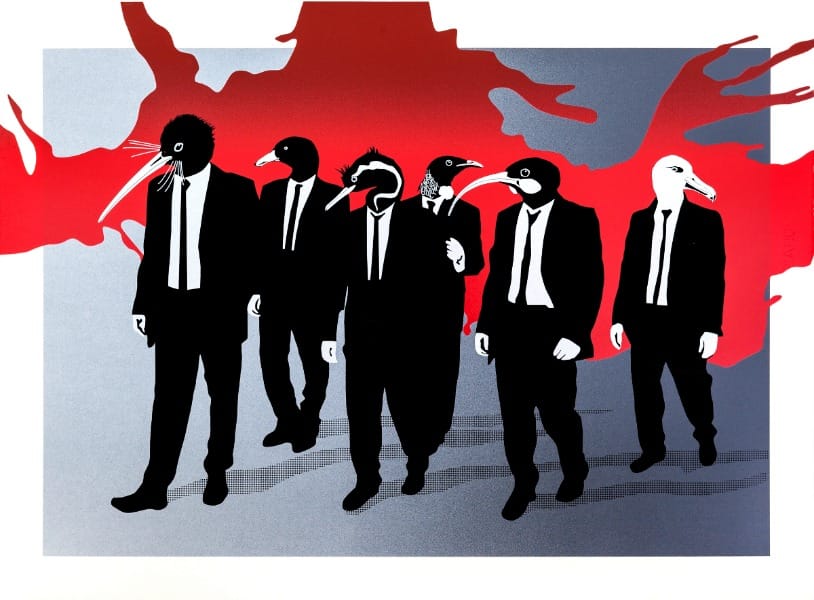
You've recently done a series of painted flowers against your signature backdrop. Does this signal a new direction?
Yes, and no. I've used the iconography of flowers in the backgrounds of my work for many years. But, more recently, after my father John passed away, I've featured them more centrally to honour him since he was a big gardener. I'm of the opinion that your life should feed into your art, so for me my art is a bit like a diary of my life.
Last, is there anything you want to plug or shout out to our readers? How can we support your work?
Don't give up! You can still live a semi-conventional life and create art too. You can define what success looks like. I love the autonomy my art career provides. I can work on what I want, when I want, where I want, and with whom I want. It can be so rewarding. Finally, take time to work on yourself; a creative life is a marathon not a sprint. It’s a very worthwhile journey!
You can check out my art on my Instagram or my website at www.newbloodpop.com. Feel free to DM me if you want to chat @newbloodpop.

